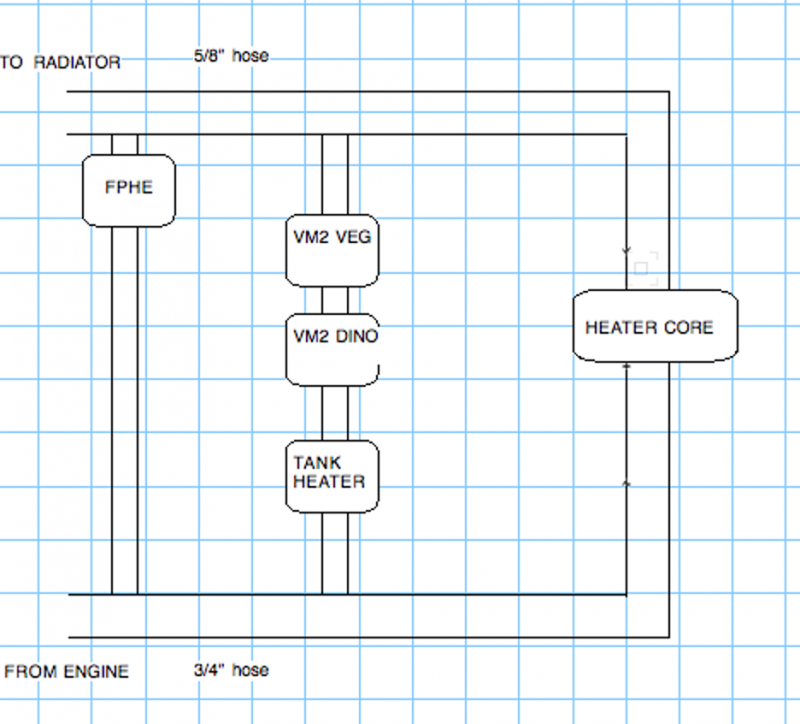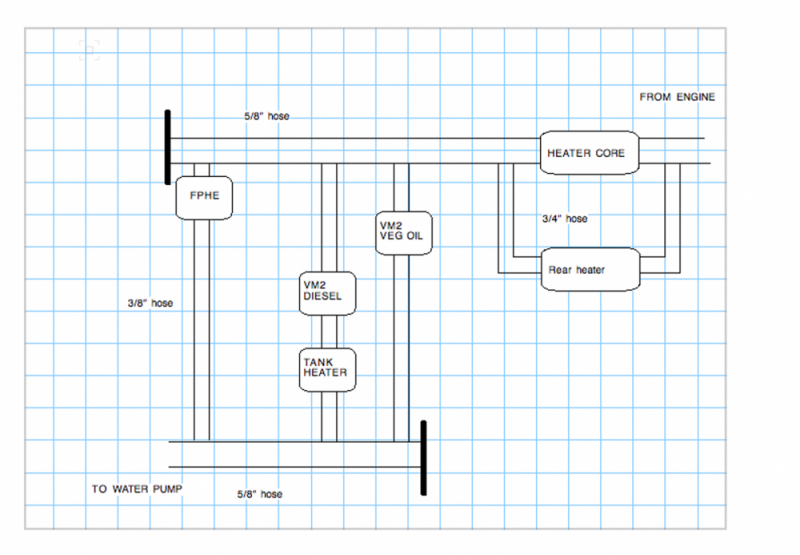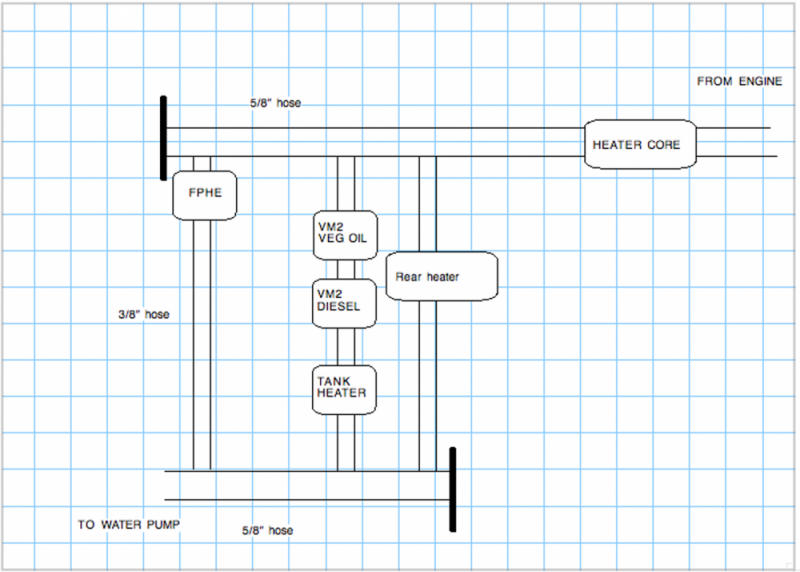So, for a while I have been planning on re-routing a lot of my coolant lines in order to get faster warmups in the winter and more heat directed at the who system.
The first thing I am planning on doing is to re-route the return hose from the heater to the radiator to go back to the water pump to get faster warmup times and to keep the heat in the coolant system rather than letting it cool in the radiator. I know overheating is an issue on the 6.5 But I live in Norway and see most temperatures around the freezing point year around - and I don't really tow - so I am not too worried about over heating.
The next step is to re route the coolant. At the moment the wvo system is T-ed in in parallel with the heater core. I want to change its so it is in series after the heater core. That way, all the coolant will be forced thru the wvo system and more heat will be transferred to the wvo.
Another factor in the gameplay is that the brackets holding the heater lines to the rear heater has all fallen off, so I need to do something about it rather sooner than later
My machine shop guy has made me two three-way manifolds so I can split the 5/8" line going between heater core and water pump into three 3/8" lines. My wvo system is running 3/8" lines
Alternative 1 is to keep the rear heater hoses as is and split the wvo system as following:
- one line to the heat exchanger
-one line to the veg oil filter
-one line to the diesel filter and wvo tank
Alternative 2 is to cut into the rear heater hoses and make the rear heater a part of the 3way split:
-one line going to the rear heater
-one line to the wvo heat exchanger
-one line to all filters and wvo tank.
What is you guys thoughts about my plans? Is 3/8" too small for the rear heater? I use it very seldom, so I don't need that much heat to go back there.
Any thoughts are good thoughts!
Cheers
The first thing I am planning on doing is to re-route the return hose from the heater to the radiator to go back to the water pump to get faster warmup times and to keep the heat in the coolant system rather than letting it cool in the radiator. I know overheating is an issue on the 6.5 But I live in Norway and see most temperatures around the freezing point year around - and I don't really tow - so I am not too worried about over heating.
The next step is to re route the coolant. At the moment the wvo system is T-ed in in parallel with the heater core. I want to change its so it is in series after the heater core. That way, all the coolant will be forced thru the wvo system and more heat will be transferred to the wvo.
Another factor in the gameplay is that the brackets holding the heater lines to the rear heater has all fallen off, so I need to do something about it rather sooner than later
My machine shop guy has made me two three-way manifolds so I can split the 5/8" line going between heater core and water pump into three 3/8" lines. My wvo system is running 3/8" lines
Alternative 1 is to keep the rear heater hoses as is and split the wvo system as following:
- one line to the heat exchanger
-one line to the veg oil filter
-one line to the diesel filter and wvo tank
Alternative 2 is to cut into the rear heater hoses and make the rear heater a part of the 3way split:
-one line going to the rear heater
-one line to the wvo heat exchanger
-one line to all filters and wvo tank.
What is you guys thoughts about my plans? Is 3/8" too small for the rear heater? I use it very seldom, so I don't need that much heat to go back there.
Any thoughts are good thoughts!
Cheers



